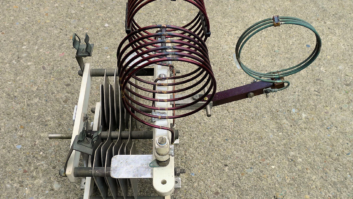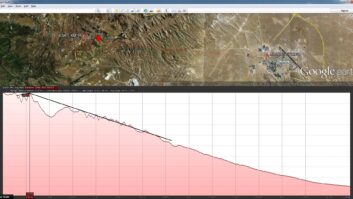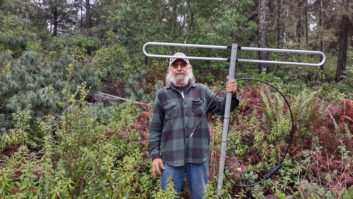Bob McLeod doesn’t work in the broadcast industry directly; he’s in power generation operations. He’s also a ham, WA1RM. He says he enjoyed our recent column on grounding and wanted to comment on the lack of proper grounding of large transmitters.
Bob cautions that before you grab a ground wire to check if it is attached to something, you should short the unknown ground to a known ground, or at least use a pair of lineman gloves, with a HV rating, to protect yourself while checking. If possible, bring another person along too. You could get quite a surprise, not to mention a good jolt, if you became the path to ground.
A great tip, Bob. One never knows where wires may go, especially at undocumented sites. A contract engineer told me recently of a very large voltage potential noted between a transmitter equipment rack and the “ground” strap. He found it by, you guessed it, touching the strap while also touching the “grounded” rack.
Reach Bob McLeod at [email protected].
…
Speaking of safe grounds, Cumulus Youngstown’s engineering team of Wes Boyd and Dan Kerr share the “dead-man’s cable” they found at WPIC(AM) in Sharon, Pa., a few years ago, shown in Fig. 1.
(click thumbnail)Fig. 1: Can you identify this jumper cable?
They weren’t sure what it was used for but couldn’t resist snapping a photo for Workbench readers. So can you come up with a good use for this cable?
My guess is it was used to “fix” some PD’s stereo. Plug in the AC, and watch the fireworks as the RCA plug is inserted (by the PD, of course!).
What do you think? E-mail your suggestions to me at [email protected].
…
Consulting Engineer Charles “Buc” Fitch, P.E., writes that Nationgrid Electric is sending out electrical workplace safety kits to customers to highlight the 10-foot minimum safety zone concept. The kit includes decals, brochures and a safety video.
For information, go to www.nationalgrid.com/safetykit. The Safety tab on the company’s site also leads you to other helpful safety-related topics.
…
Last column Paul Sagi wrote of the benefits of those little keychain-type LED flashlights.
(click thumbnail)Fig. 2: The battery on this FlashLED will last for eight days.
Torrance, Calif.’s LEDtronics has a powerful LED FlashLED, the FLT-4001, seen in Fig. 2. It’s not a keychain, but a compact flashlight – or rather, a “flashLED” – that can provide 1,800 foot-candles of white light from its 1-watt Luxeon LEDs.
The company says these are the brightest solid-state light sources available commercially. The LED integrates a collimator that focuses the light into a tight beam. Of particular use for the engineer is that the white LED lamp operates for more than six years.
(click thumbnail)Fig. 3: Dry grass is a real fire threat.
(click thumbnail)Fig 4: Exposed cables threaten the air-worthiness of this station should fire strike.
The battery life of the FLT-4001 is spec’d at eight days on three alkaline C-cells. The FlashLED is about 10 inches long and weighs about a pound with the batteries installed.
With specs like that, no more dead flashlight. Visit www.ledtronics.com
…
While we’re on the topic of new products, MuxLab Inc. ( www.muxlab.com ), a manufacturer of security video and audio-video connectivity products for copper twisted pair, has an addition to its line, the Quad Audio Balun (Model 500033) .
This one was developed for the custom audio market. It allows up to four analog line audio channels to be transmitted via twisted pair, thus allowing four coax audio cables to be replaced by one Cat-5 cable.
The balun supports line-level analog audio up to 5,000 feet via Cat-5 and works in pairs or with MuxLab’s other analog audio baluns.
…
We’ll wrap up with a word of warning about those transmitter sites you never find time to visit.
Drought conditions in many states can really dry out the field grass that grew uncontrolled in the spring. We could caption Fig. 3 simply, “Got a match?” In Fig. 4, in addition to sampling and feeder coax, there’s control cable and direct burial 240VAC electric cable somewhere in that grass.
Unless you want to rebuild your site, get the grass cleared from the building and inside the tower fence and guy points. If you hire a landscaping firm to do this, have them spread plastic or cloth weed prevention fabric, and cover with crushed stone. The extra effort will be worth it, cutting down on rodents, insects and the fine pollen the grasses would release next spring.
Submissions for this column are encouraged, and qualify for SBE recertification credit.
















